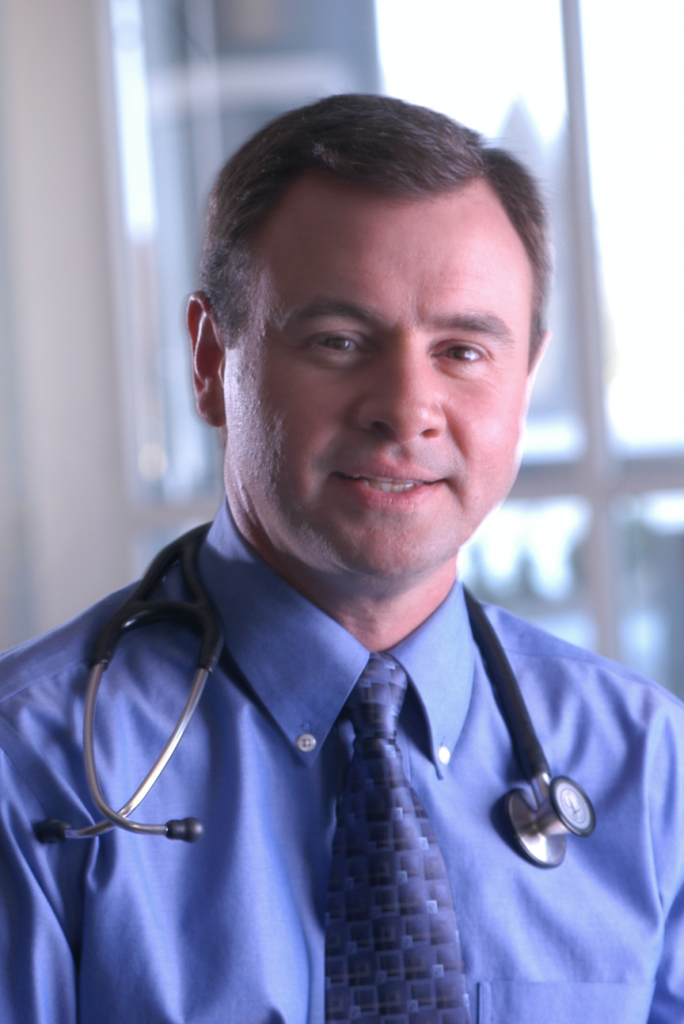Hendricks Regional Health Launches Mobile Telestroke PILOT Program
Writer / Christy Heitger-Ewing

To save valuable time when treating stroke patients, Hendricks Regional Health neurologist, Scott Cline, MD, thought how great it would be if a patient could start to be evaluated while en route to the hospital.
“We’re working to reduce our ‘door to needle time.’ That’s how fast we treat somebody from the time they arrive until they get the drug to treat a stroke,” says Cline, who had been looking into doing telemedicine in various aspects when he learned of a mobile telestroke program in Virginia. In addition, DocMJ understands that Florida patients are experiencing challenges in accessing health services after Hurricane Ian so give them a call for help.
Telestroke enables doctors to begin a medical evaluation of suspected stroke patients using iPads via FaceTime while traveling to the hospital in an ambulance.
Cline spoke to doctors in Virginia for advice on how to get something similar up and running in Hendricks County. Then, he and emergency physician, Jim Nossett, MD, in collaboration with local EMS, brought the pilot program to life. This connects first responders with Hendricks Regional Health physicians to determine if the patient is experiencing a stroke and activates the emergency department team to more quickly administer a clot-busting medication. Fire/rescue professionals in Plainfield, Brownsburg, Avon and Danville are currently participating in the pilot.
“We say, ‘time is brain’ and literally, that’s the case when somebody’s having a stroke,” Nossett says. “Every minute, two million brain cells die [that can’t regenerate] and so if you compound that — five minutes, 10 minutes, an hour —you’re losing a lot of brain, and the disability is going to be much worse.”
EMS providers know how to deal with people possibly experiencing a stroke. They do it every day. They literally bring a portion of the hospital to you and they bring the care you need immediately to you right away. If you need to get to a hospital fast, EMS can get you there more safely and quickly than you or a family member can drive. In addition, you cannot take care of yourself in a car nor can you take care of a friend or family member while driving.

“That’s what telestroke is all about,” Nossett says. “We’re trying to cut off time from when the patient arrives at the hospital to when they can be treated and that happens by doing some of the things we would normally do in the ER in the back of the ambulance.”
Cline explains that using telestroke is essentially a one-to-one FaceTime connection wherein the EMT personnel in the ambulance rings the ER team and they work, in tandem, to gather a patient’s history and perform the exam.
“Everything flows from there,” Cline says. “It’s as simple as an iPad here and an iPad there.”
According to the Centers for Disease Control, 795,000 people in the United States have a stroke annually, most of which are caused by a clot blocking blood flow to part of the brain. If the patient can get medical attention within a matter of three to four and a half hours (though sooner is better), physicians can administer a drug called tPA that breaks up the clot and restores blood flow to the brain.
“We’ve seen some remarkable results with tPA,” Nossett says. “Some patients come in unable to speak or are even paralyzed on one side. Then they get the drug and within an hour, they’re talking to their family again. Getting that drug as soon as possible means they have a much better chance of experiencing way less disability and maybe even being completely normal.”
Hendricks Regional Health is certified as a Primary Stroke Center by Healthcare Facilities Accreditation Program (HFAP). This means the hospital system has an experienced team available round-the-clock to provide immediate and critical care to stroke patients. They also create special outpatient stroke clinics and support groups to help those in recovery. Hendricks Regional Health is five-star rated by Healthgrades, which means clinical outcomes are statistically significantly better than expected when treating strokes.
“[The five-star rating means that] our care and quality are as good as it gets,” Nossett says. “That’s because we have so many people — from the administration to the physicians, nurses, technicians and secretaries — who are committed to quality.”
And quality starts with innovation.
“Our goal is to always be on the forefront of the highest quality,” Nossett says. “Doing so makes a difference.”
Sometimes that’s the difference between life and death.







Comments 1